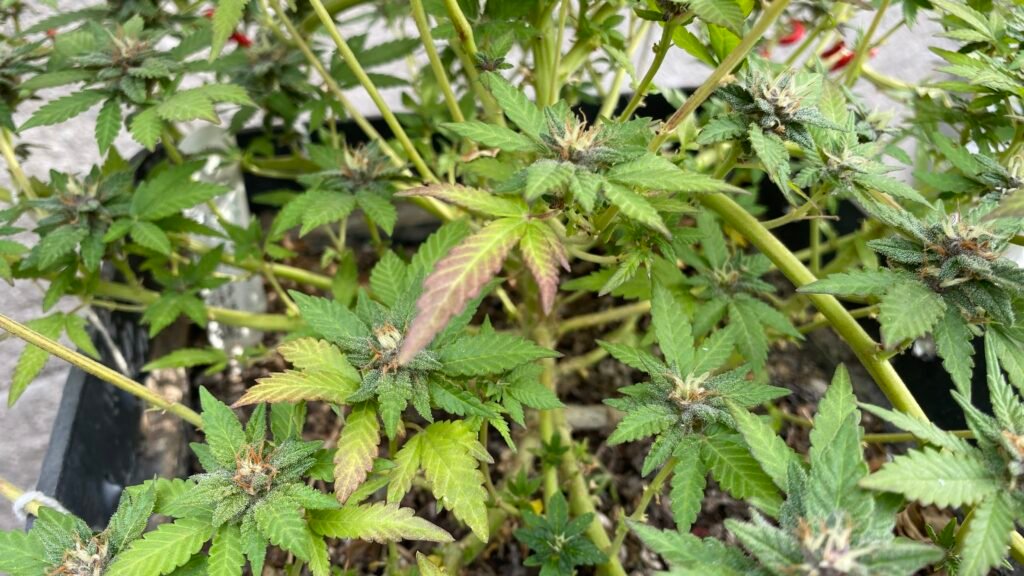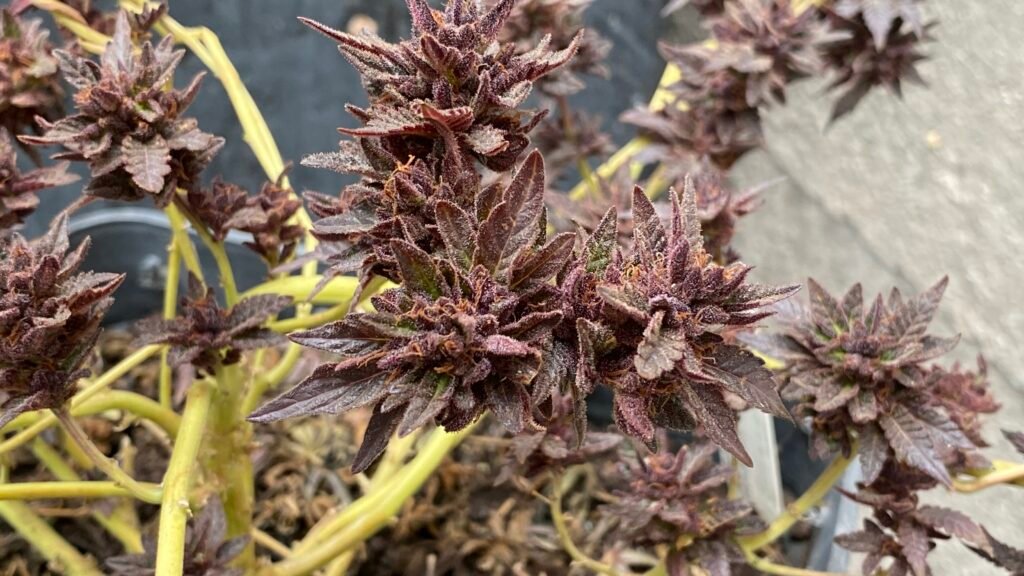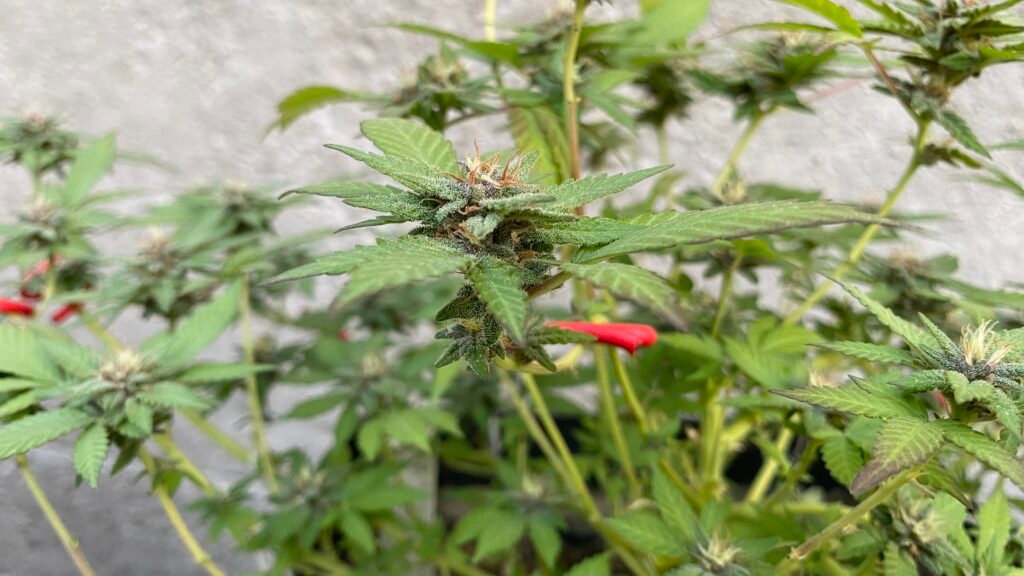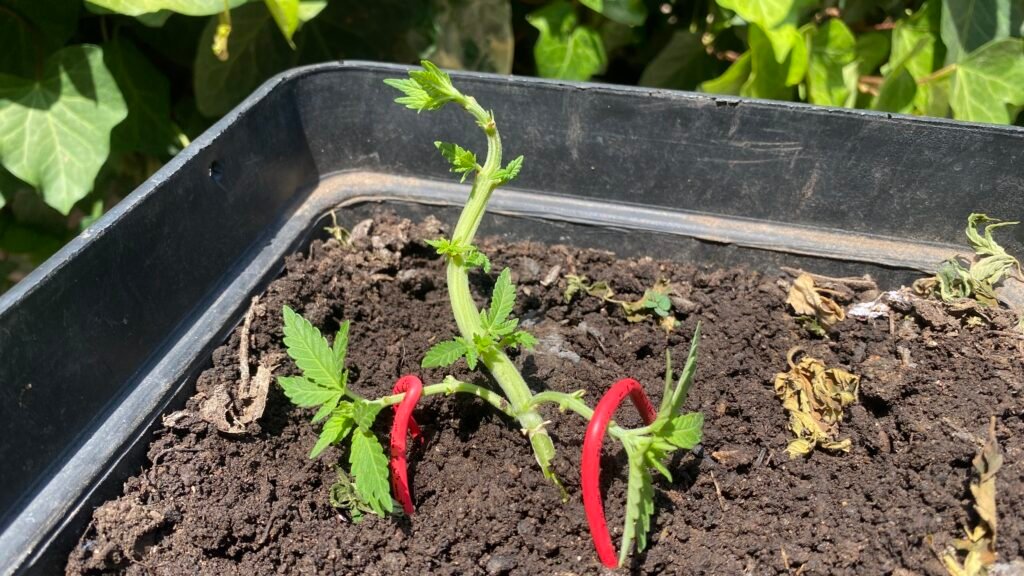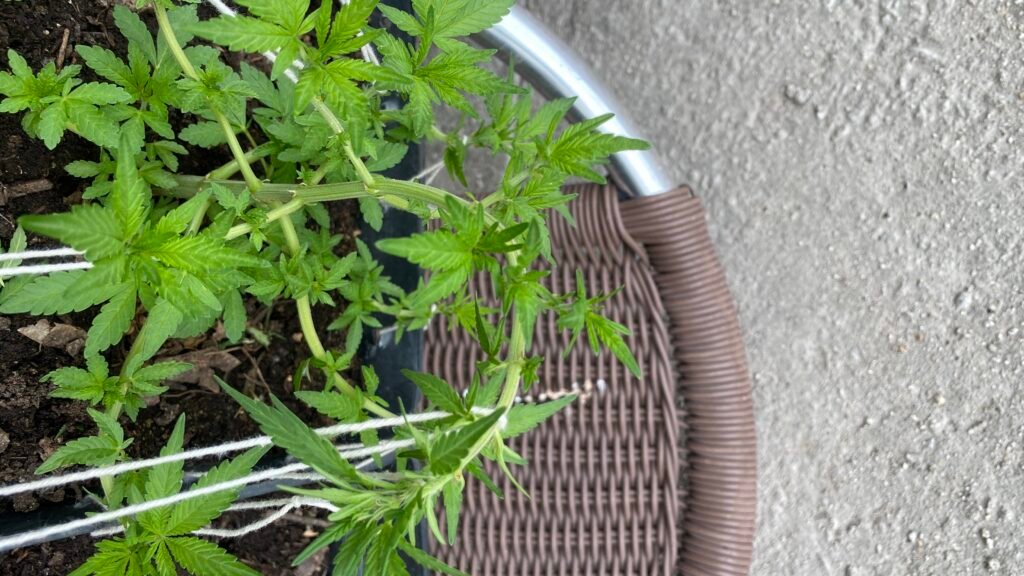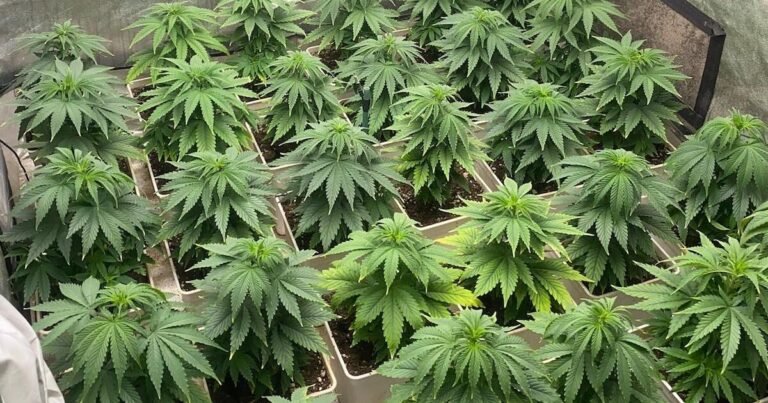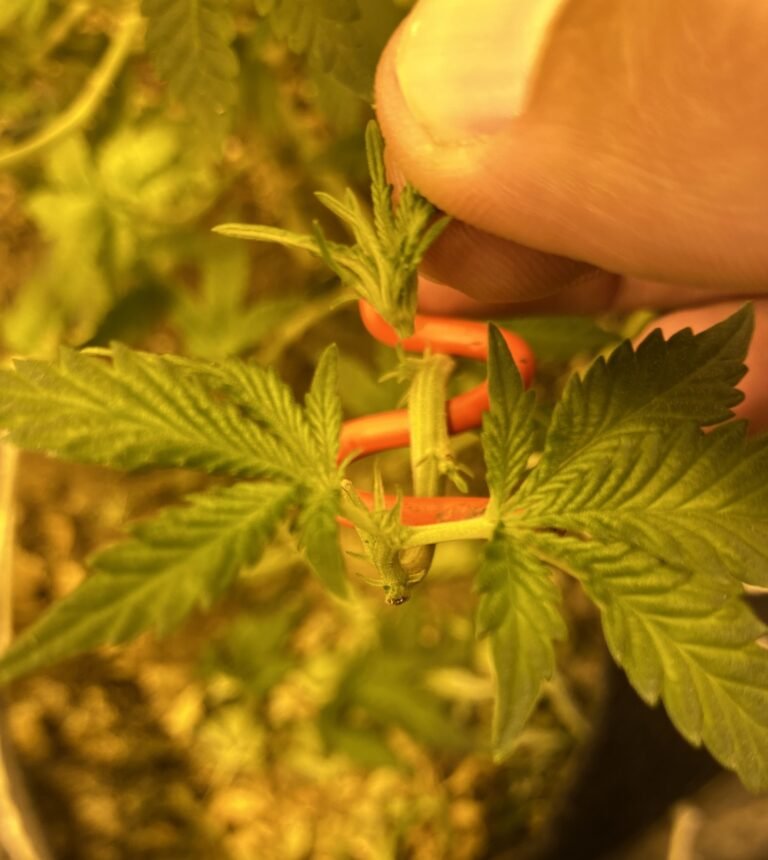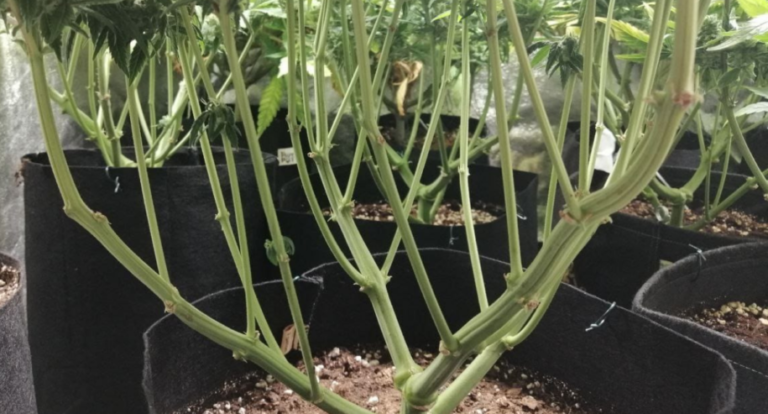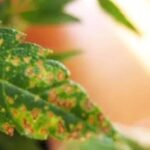The LST technique involves tying the structure from the apical tip of the marijuana plant. This method offers very good results, subjecting the plants to minimal stress. Unlike other techniques, it doesn’t require pruning or branch cutting, minimizing the stress the plants experience. However, pruning at the base and, for experts, the top of the plant can also be performed.

What does the technique consist of and how is it performed?
As we already mention, LST technique involves bending the tip or main stem of the plant and tying it. The purpose of this is that the plant grows horizontally and remains at the same height as the secondary branches. Thiss technique promotes equal growth and development of all branches and more uniform light reception while allowing height control.
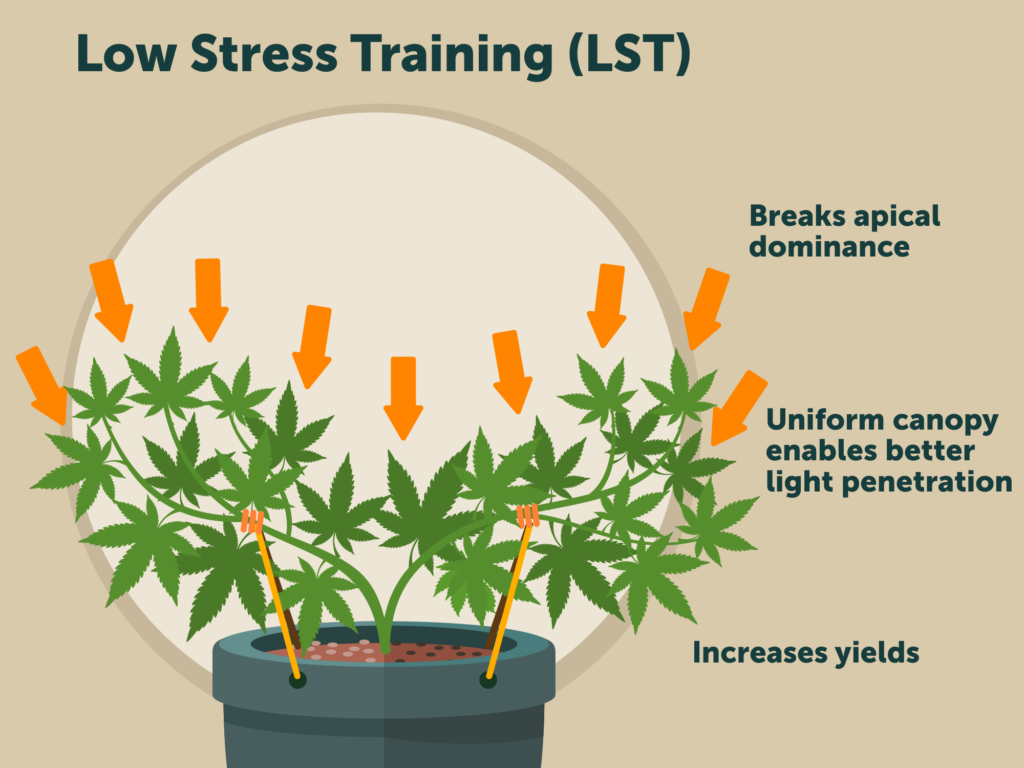
As the plant develops, the apical tip will straighten again and the process must be repeated. At that point, it has to be carefully bent and tied so that it remains at the same height as the other branches.
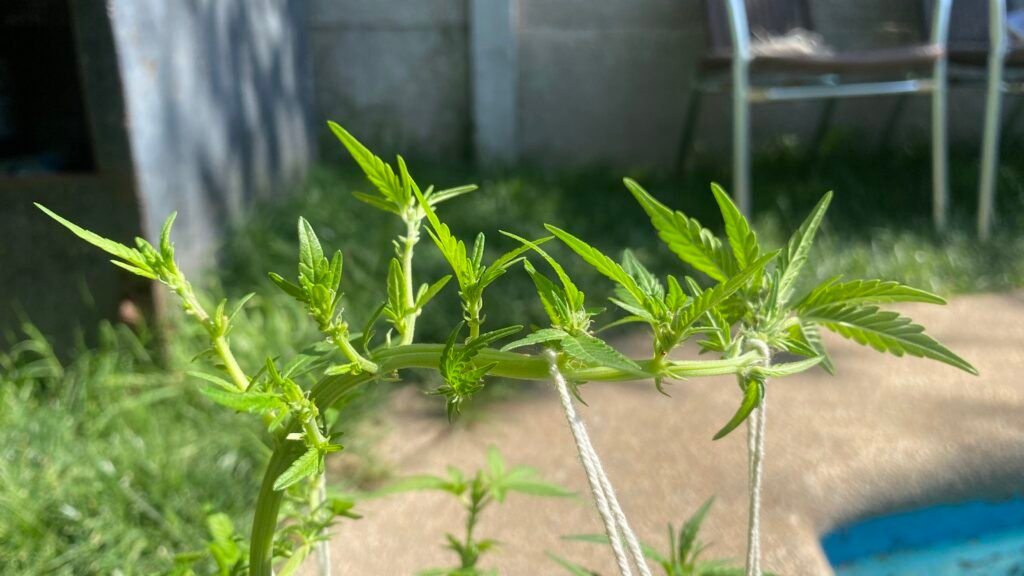
When you grow your plants in pots you can make a smal hole in one of the corners at the top of the pot, thread a strand of stranded string trough it and secure the previously bent main stem. Once the plant grows and straightens, it takes it natural shape, so you should repeat the previous process in the adjacent corner so that the plant has completely surrounded the pot, developing many secondary branches. These branches will all remain horizontal, forming a uniform layer of tips from which the buds will grow.
You can use stakes attached to the substrate at the corners of the pots. These will be used to tie the branches and shape the plant as you like. Cannabis stems are quite flexible and bend easily, but you must do it carefully because they also are quite delicate and they could break easily.
You can also use weighted ropes at one end to carefully tie the main stem to the other end and keep it bent. The operation will be repeated as many times as necessary with the intention of maintain a uniform height throughout the entire plant.

What benefits does the technique offer?
If the LST technique is performed correctly, flowers of a uniform size will be harvested, maximizing the variety’s production by ensuring that there are no lower parts of the plant because the entire plant receives light equally, forming good flowers throughout the foliage. Another advantage of LST cultivation is that all the flowers will be at their peak ripeness on the same day, allowing the plant to be harvested at once instead of having to harvest in parts or have flowers with different stages of ripeness.
The LST process is best started during the early stages of the growing season, when the stems are tender and easy to guide.
This technique allows for more discreet cultivation, as in some locations protected by walls a lower height can be maintained reducing wind and the gaze of curious onlookers.
At the same time, guerrilla farming allows the area’s vegetation to be kept below its height, making it more discreet, as its structure is subconsciously associated with that of a Christmas tree.

To keep in mind
Use specific gardening tie-downs because using fishing line, thin rope, or similar will likely end up strangling the stems and producing counterproductive results. Stem ties should be made with loops that leave slack, not knots that strangle them. In this regard, it’s a good idea to check the ties on the stems daily, as the stem and branches eventually thicken, and it’s easy for some of the knots to become too tight over time.
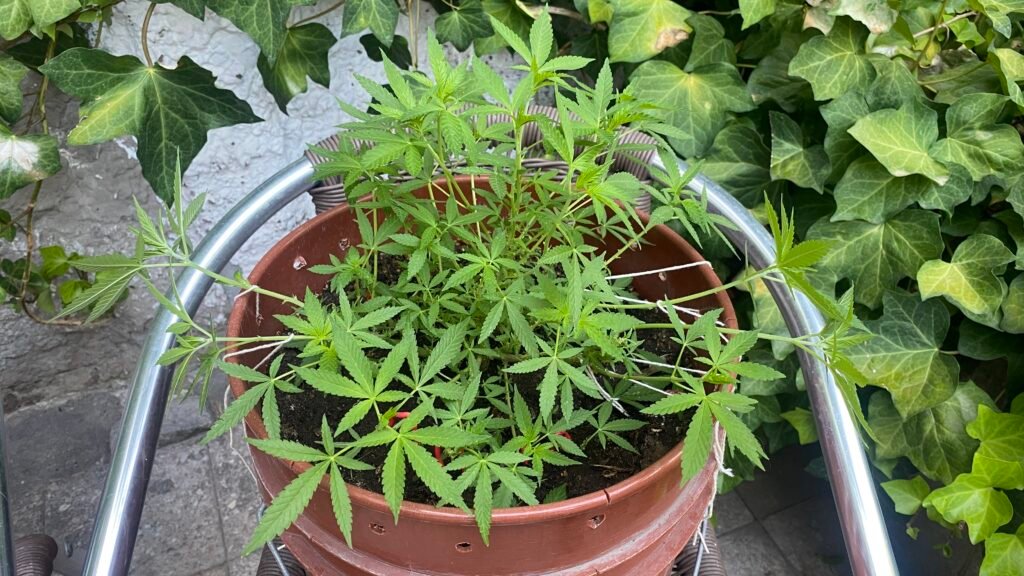
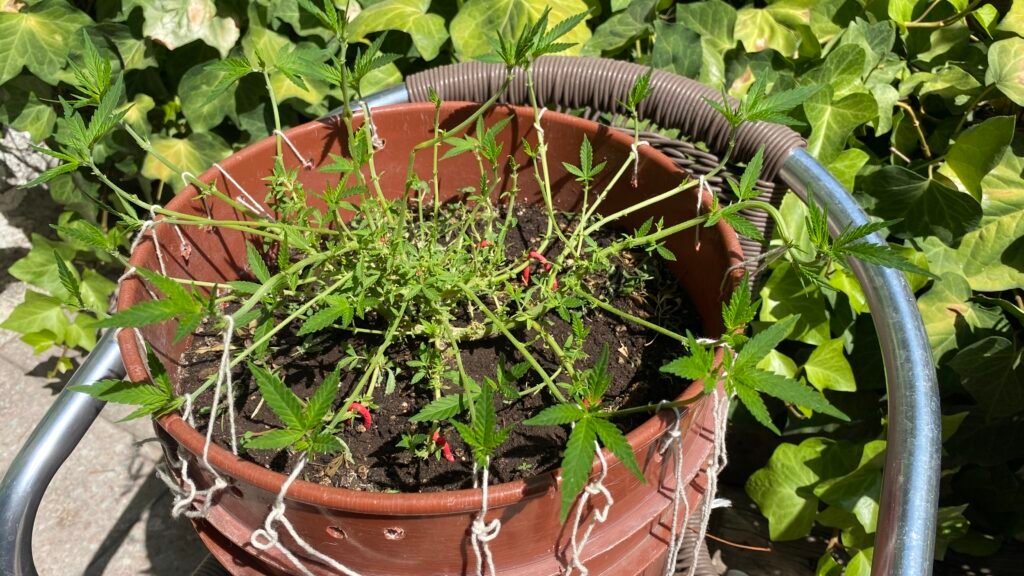
If you want to apply this technique to advanced plants, you have to spread the work over several days, applying little force and gradually. To bend a main stem to 70°, you can tie it with string and tilt the plant 10°. After two days, repeat the process and monitor the progress. Then in 10-15 days, you could bend a plant without breaking it and gradually shape it to reduce its vertical height.
Is LST an outdoor or indoor tyechique?
This technique can be applied indoor and outdoor, offering different advantages in each one.
Indoor, larger growing areas can be covered with fewer plants. As a disadvantage, the LST technique requires more time in the vegetative phase.
Low stress training allows you to grow vigorous varieties in locations with a certain height, as is the case with some sativas, which experience considerable growth during the flowering period. LST allows us to shape mother plants, optimizing space and obtaining a large number of buds for cuttings from a single specimen.
Outdoor, thanks to the technique uniform harvests are favored, and the risks of fungal attacks and rot are reduced by distributing the harvest into medium-sized buds, avoiding excessively large flowers that tend to suffer from these types of problems. There are no contraindications to performing the LST technique outdoors.
